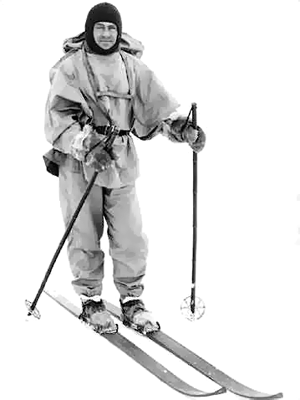News about maps
Digital cartography and GPS navigation
Mapstor news
This Day in History
Travelling with mapstor.com
This Day in History
4th December, 1674 Marquette founded the first European settlement
19th November, 1875 was born Hiram Bingham
18th November, 1832 was born Nils Adolf Erik Nordenskiöld
14th November, 1963 the island Surtsey was founded
11th November, 1729 was born Louis Antoine comte de Bougainville
6 June 1868 - Birth of Robert Scott
 On 6th of June, 1868, Robert Scott was born. This man figured in history as one of the discoverers and explorers of the South Pole. He led two expeditions - "Discovery" (1901-1904) and "Terra Nova" (1912-1913). During the second trip R. Scott along with four members of the team was able to conquer the South Pole, but learned that Norwegian researchers have made that a few weeks before. This expedition was fatal for Scott, neither he nor his companions returned back. All of them died of hunger and cold.
On 6th of June, 1868, Robert Scott was born. This man figured in history as one of the discoverers and explorers of the South Pole. He led two expeditions - "Discovery" (1901-1904) and "Terra Nova" (1912-1913). During the second trip R. Scott along with four members of the team was able to conquer the South Pole, but learned that Norwegian researchers have made that a few weeks before. This expedition was fatal for Scott, neither he nor his companions returned back. All of them died of hunger and cold.
Robert was born in a family with strong naval traditions. At age of 13 he entered the Naval Academy and became a cadet. In 1883 after graduating with the rank of warrant officer, he was enlisted.
Since 1894 the family of Robert Scott had domestic torubles. His father sold the brewery and indiscreetly invested all the money, and then became bankrupt. In 63 years he was forced to work as a manger in the brewery. Three years later his father died. Therefore, financial support of the mother and two unmarried sisters falled on the shoulders of Robert and his brother, Archie. In order to improve their welfare Archibald left the army and filled a high-paid post in the colonial service. However, in 1898 he died of typhoid fever. Now the entire burden fell on the shoulders of a young Robert, for which advancement was of paramount importance.
Robert Scott was appointed a head of the polar expedition, but he did not even know what difficulties he would face in polar conditions. On 21st of March 1901, the crew on the ship "Discovery" set sail. On the expedition ship there were skis and dog, but hardly anyone had an idea about how to handle them. The main task of the team was to travel south, where the South Pole is situated. It was a tough and exhaustible trip, after which the 10-member team headed home.
By the second year of the expedition, the sailors showed a refined technique, which allowed them to make several trips to the mainland. The biggest trip was 400 km long in the western direction. During this trip, the researchers were busy studying the Polar Plateau.
Among the scientific results of the expedition we can mention meteorological and magnetic data, valuable geological, biological and zoological material. They have also discovered the peninsula of Edward VII and researched the nature of the Ross barrier and the coastal mountain range, which is part of the Tran Antarctic Mountains. From 1904 till 1906 years Scott has lectured and wrote expedition reports.
On 26th of November 1910 the ship under the name "Terra Nova" put off the coast of New Zealand. From the very beginning they went through a bad patch that disrupted a normal preparation for the polar expedition.
The difference of the expedition "Terra Nova" was that it consisted of two parts - North and South. While one half of the team was engaged exclusively in scientific researches, the goal of the second was to conquer the South Pole.
It was planned that three groups go on motor sledge, dogs and horses forward to organize food stores, after which two groups would turn back, and the main group would go to conquer the South Pole. It happened so that because of the poor organization of the expedition, sledges broke down and most of the horses had to be shot during the organization of one of the camps.
When Robert Scott, along with his four companions reached the South Pole, they saw a black flag and a lot of dog tracks and realized that the Norwegians got ahead of them. When the team conquered the South Pole, they saw Amundsen's tent that contained a note in which the conquerors asked to convey the news of the conquest of the South Pole, in case they die on the road. There was also a plate on which was the date of the conquest of the South Pole: a month before Robert Scott. But none of Scott’s team returned home.
This Day in History 06-06-2012


